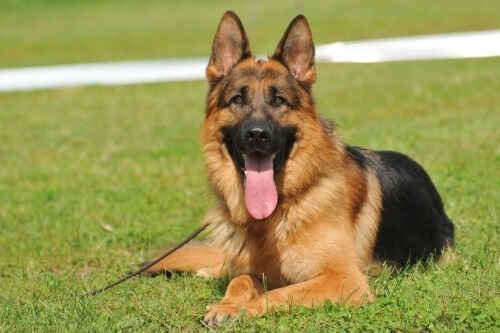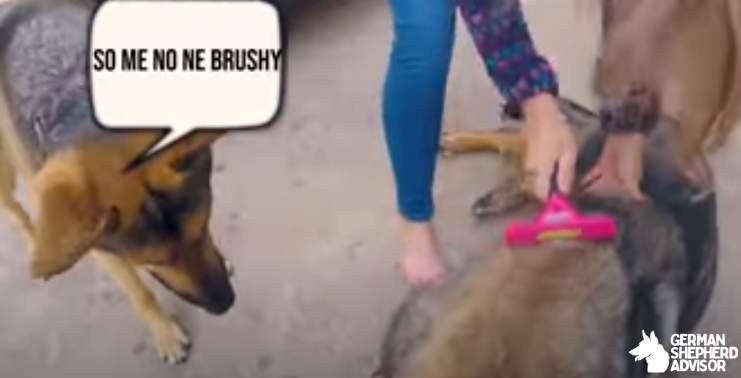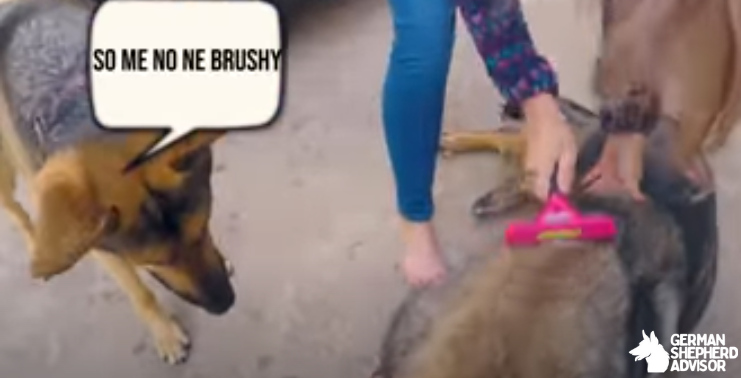“German Shepherds shed a lot—but with the right care, you can minimize the mess and maximize your love for this amazing breed.” German Shepherds are among the most popular dog breeds worldwide, known for their intelligence, loyalty, and versatility. But anyone considering adding one to their family or already owning one may wonder: Do German Shepherds shed? The answer is a resounding yes, and understanding why and how to manage it is essential to keeping both you and your dog happy.
Let’s dive into the details of German Shepherd shedding and the best ways to handle it. Learn all about German Shepherd shedding habits!
Understanding the German Shepherd coat

German Shepherds are equipped with a double coat, a key characteristic of the breed. This coat not only contributes to their distinctive look but also plays a functional role:
- Outer coat (guard hairs): These longer, coarser hairs protect the dog from dirt, moisture, and harsh weather.
- Undercoat: Soft and dense, this layer provides insulation, keeping them warm in cold weather and cool in hot conditions.

Seasonal shedding cycles
German Shepherds shed year-round, but they experience two significant shedding periods during spring and fall. These are often referred to as “coat blowouts,” where the undercoat is shed to prepare for seasonal temperature changes.
Different coat types
The amount and visibility of shedding may vary slightly depending on your dog’s coat type. German Shepherds come in:
- Short coats: Easier to manage but still heavy shedders.
- Medium coats: Most common and require regular grooming.
- Long coats: These dogs have more noticeable shedding and may require extra care.
How much do German Shepherds shed?

The short answer: a lot!
Shedding is a natural process for German Shepherds, and while they shed to some degree year-round, the intensity can vary. Here are some factors that influence shedding:
Seasonal changes
During spring, dogs shed their winter coat to prepare for warmer months. In fall, the process reverses as they grow a thicker coat for the winter. Expect heavier shedding during these transitions.


Diet and nutrition
A poor diet can lead to excessive shedding. Nutritional deficiencies, particularly a lack of omega-3 fatty acids, protein, or essential vitamins, can make their coat dull and prone to shedding.
Stress and environment
Stressful situations, changes in routine, or environmental factors (like a sudden change in temperature) can increase shedding. Dogs are sensitive creatures, and stress can manifest in physical ways, including their coat health.
Health issues
Sometimes, excessive shedding is a sign of underlying health problems such as allergies, skin infections, or hormonal imbalances. It’s important to keep an eye on your dog’s coat and overall health.
Managing shedding in German Shepherds

Shedding is inevitable, but proper care can significantly reduce its impact. Here’s how to stay on top of it:
Regular grooming
Brush your German Shepherd at least 2–3 times a week during normal periods and daily during seasonal blowouts. Invest in high-quality grooming tools such as:
- Undercoat rakes: To remove loose hair from the undercoat.
- De-shedding tools: For heavy shedding periods.
- Slicker brushes: To tackle tangles and loose hairs on the outer coat.
Regular grooming not only controls shedding but also helps distribute natural oils for a healthier coat.
Healthy diet
Include foods rich in omega-3 fatty acids, which promote a shiny and strong coat. Supplements like fish oil can also help. Ensure your dog’s diet includes high-quality protein and essential vitamins to maintain overall coat health. Proper hydration supports skin elasticity and reduces shedding.
Bathing and home maintenance
Bath your German Shepherd every 4–6 weeks or as needed, using a shed-control shampoo. Avoid over-bathing, as this can strip the natural oils from their coat, causing dry skin and more shedding. Use a de-shedding conditioner to loosen hair and make grooming easier.
Regularly vacuum carpets, furniture, and other surfaces to keep fur under control. Use pet-specific vacuums or tools like lint rollers for quick cleanups.
When to be concerned about shedding?
While shedding is normal for German Shepherds, there are times when it could indicate a problem. Watch for the following signs:
- Bald patches or thinning coat.
- Skin irritation, redness, or dryness.
- Excessive shedding outside of seasonal patterns.
These issues may point to underlying conditions such as:
- Allergies: Food, environmental, or contact allergies.
- Parasites: Fleas, mites, or ticks can cause itching and hair loss.
- Hormonal imbalances: Conditions like hypothyroidism or Cushing’s disease.
If you notice these signs, consult your veterinarian for a proper diagnosis and treatment plan.
Shedding vs. hypoallergenic breeds
It’s essential to note that German Shepherds are not hypoallergenic. Their constant shedding can be challenging for allergy sufferers.
However, there are ways to minimize allergens in your home:
- Use an air purifier to reduce dander.
- Groom your dog outdoors to prevent hair and allergens from spreading inside.
- Wash bedding and other fabrics regularly.
How can I manage dog hair in my home?


To manage dog hair:
- Vacuum regularly using a pet-specific vacuum.
- Use lint rollers or furniture covers to control fur on upholstery.
- Groom your dog outdoors whenever possible to reduce indoor fur.
Conclusion
German Shepherds are wonderful companions, but their shedding can be a challenge. Understanding the reasons behind their shedding and taking proactive steps to manage it will make life easier for you and your dog. With regular grooming, a healthy diet, and proper care, you can keep their coat looking shiny and reduce the impact of shedding on your home.
Frequently asked questions (FAQs)
No, the amount of shedding can vary based on the individual dog, their coat type (short, medium, or long), diet, health, and grooming routine. However, all German Shepherds shed due to their double coat.
Excessive shedding could be caused by seasonal changes, stress, poor nutrition, or underlying health issues such as allergies or skin infections. If shedding seems abnormal, consult your veterinarian.
You should brush your German Shepherd at least 2–3 times a week during normal periods and daily during heavy shedding seasons (spring and fall). Regular grooming helps minimize loose fur and keeps their coat healthy.
Yes, a healthy diet plays a significant role in coat health. Foods rich in omega-3 fatty acids, protein, and vitamins can help reduce shedding by promoting a strong, shiny coat.
Yes, but over-bathing can cause dry skin, which may increase shedding. Bathe your German Shepherd every 4–6 weeks or as needed, using a gentle, shed-control shampoo to reduce loose hair.
No, German Shepherds are not hypoallergenic. Their constant shedding can be challenging for individuals with allergies. Using air purifiers and regular grooming can help reduce allergens in the home.
Yes, stress can lead to increased shedding. Changes in routine, moving, or introducing a new pet can trigger stress-related shedding. Try to maintain a consistent and calm environment for your dog.
References and sources:
- https://www.akc.org/expert-advice/health/tips-for-grooming-german-shepherd/
- https://www.akc.org/expert-advice/news/most-popular-dog-breeds-2023/
- https://www.petmd.com/dog/breeds/german-shepherd
- https://www.britannica.com/animal/German-shepherd
- https://www.akc.org/dog-breeds/german-shepherd-dog/
- https://en.wikipedia.org/wiki/German_Shepherd

